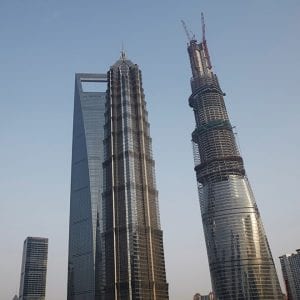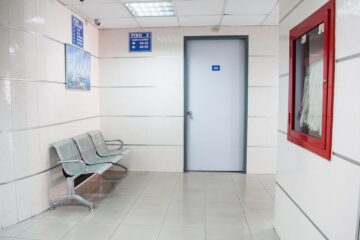 The question of tall buildings ever being sustainable buildings is growing more heated. This simple question also poses a convoluted crop of answers on both sides of the fence. The most commonly held view of tall buildings is that they are a type of development that is, for the most part, largely unsustainable. And this viewpoint is easily supported by the jarring experiences of the many failed tower blocks that were erected in the fifties and sixties. Along with those behemoths came a myriad of erosive environmental and urban conditions.
The question of tall buildings ever being sustainable buildings is growing more heated. This simple question also poses a convoluted crop of answers on both sides of the fence. The most commonly held view of tall buildings is that they are a type of development that is, for the most part, largely unsustainable. And this viewpoint is easily supported by the jarring experiences of the many failed tower blocks that were erected in the fifties and sixties. Along with those behemoths came a myriad of erosive environmental and urban conditions.
Not only that but critics like to highlight a slew of commonly held environmental and social evidence as justification that range from poor life expectancy, energy inefficiency and overheating. Ironically, Ken Shuttleworth, one of the preeminent designers of London’s “Gherkin” tower, previously announced quite dramatically that era of the glass skyscraper is, or at least should be, dead.
However, there is a vocal and lively counter-argument that possesses an opposite point of view. These subscribers are convinced that tall buildings can be sustainable buildings and they do offer innovation that is without equal. They maintain that what was responsible for the high-rise urban ghettos of the last half of the 20th century was as much poor maintenance as it was poor design.
In addition, advocates for high rise can now point to a strong and growing list of technological advances that do allow skyscrapers to be sustainable buildings if not greener than their compatriots in the low-rise levels. As an example, Gensler’s Shanghai Tower, which is the second tallest tower in the world, has claimed to be the greenest in the world. In another example, the world’s first Passivhaus office tower was certified in Vienna a little less than two years ago. There are also a slew of visionaries like “ecoarchitect” Ken Yeang who has long promoted tall buildings as vertical lush “greenscapes” which can offer a somewhat utopian ideal of a sustainable future.
The above provides divergent views that occupy both ends of the spectrum. Where does the truth lie, and is there a way to find out what it is? An example that crystallises the obvious and not so obvious challenges inherent in this quest is illustrated in a 2013 report published in New York, which for many is considered to be the “spiritual home” of the skyscraper. Well-respected environmental consultants, Terrapin Bright Green, recommended in that report that the city should demolish scores of Manhattan high-rises built mid-century because their poor construction, single-pane glazing, and less than optimal insulation made them far too energy inefficient and because of their construction pedigree, too difficult to adapt.
But what did the report suggest these building should be replaced by? They recommended that bigger and better skyscrapers should be redesigned and not to revert to low or mid-rise structures. In fact, the report claimed that contemporary replacements that are designed more efficiently were 44% larger than their predecessors and would consume 5% less energy while offsetting their carbon cost of construction inside of the range of 15 to 28 years.
It is not just New York where new standards for skyscrapers are vital but London has an urgent need to assess all of the sustainable merits of skyscrapers. In fact, last year’s revelation by New London Architecture, an urban think-tank, that 230 tall buildings are to be built in the city has understandably provoked a lively and sometimes contentious over the future of London’s skyline.
However, there has been less importance put on the sustainable elements of these developments, which are bound to be substantial. Along with the environmental consequences, there could very well be profound social effects too. London, unlike New York, has a property market that sustains an obvious unbalanced economic climate which consists of high prices and low supply. And this is mostly fuelled by unfettered foreign investment in luxury residential projects.
But there we could potentially see tall buildings enjoying an even greater level of sustainable credibility with the rise of the wooden skyscraper. The term itself is incongruous but already across the world, there have been major technological advances in the development of timber that is engineered along with the advent of fire-resisting cross-laminated timber (CLT) in particular.
Time will tell what trajectory the construction of sustainable buildings will take but you can be assured that the path will not be straight and sure.


















